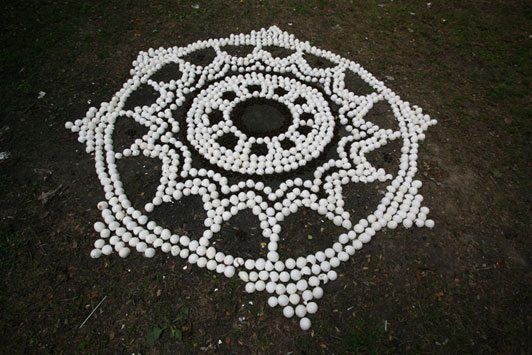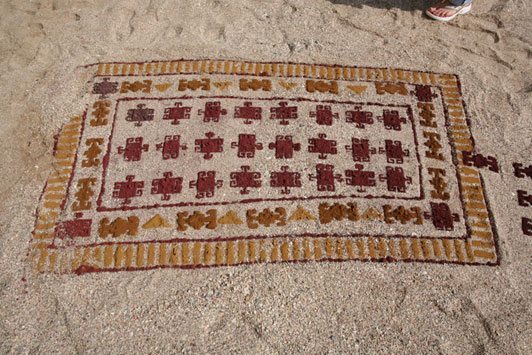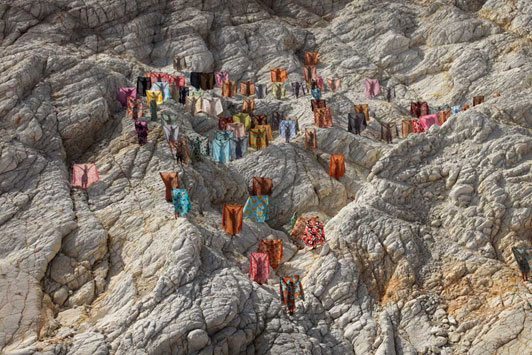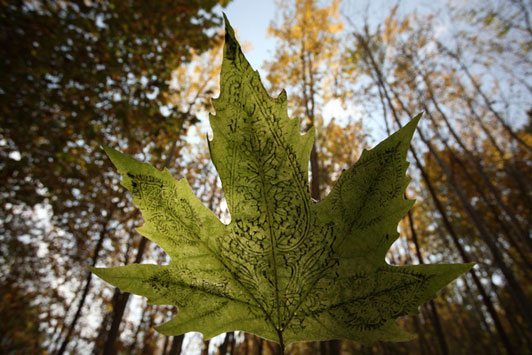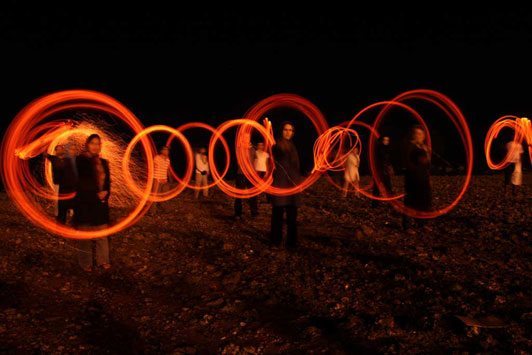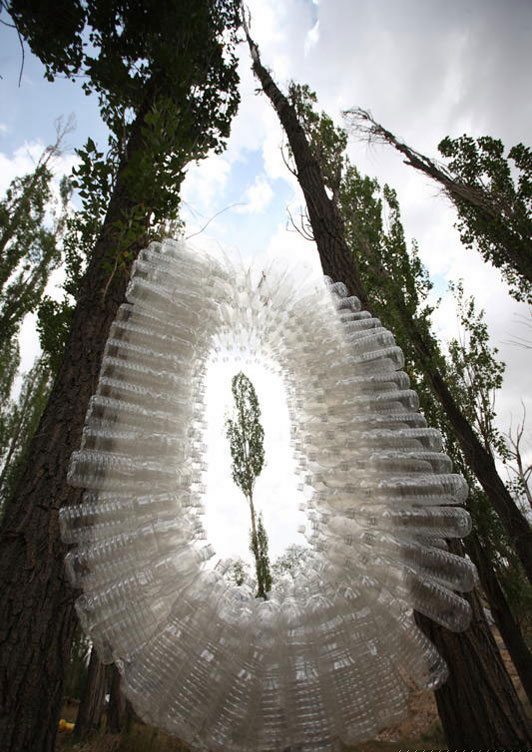Location: Tehran, Iran
ENVIRONMENTAL ART IS A GROWING MOVEMENT IN IRAN that appeals to the younger generation. Although sometimes economic, political, social and religious issues are reflected in their works, these artists focus mostly on urgent environmental issues. It is not possible to speak about all of the environmental artists, so this article addresses a select few, several with whom we have collaborated. Because of the vast physical geographic variations and cultural differences in all of Iran, this movement presents a rich diverse body of work.
I. INDEPENDENT ENVIRONMENTAL ART FESTIVALS
Twenty-seven environmental independent art festivals have been held since 2004 in Iran, in different cities. More than 30 artists participate in these festivals which are managed by Iranian environmental artist, Dr. Ahmad Nadalian (www.riverart.net). Many environmental artists from around the world participate, including painters, sculptors, photographers, musicians and documentarians. These contemporary art trends are not necessarily about environmental issues, but rather a contemporary approach such as temporal installations and natural materials. See examples in this article’s photographs.
IN THIS MOVEMENT, MANY WORKS ARE EPHEMERAL and many constructed–in part or all, with natural materials such as soil, stones, water, leaves, moss, and/or branches. These works are designed for a particular place (site-specific) and frequently involve collaborations between artists and others, such as community groups or university students. Because final public presentation of these temporal installations is through documentation– photography or video art–collaboration with a photographer is necessary. Also the majority of presentations are on websites and web blogs in order to avoid the expense of exhibitions and to reach large audiences.
II. GROUPS

PERSIAN NEW ART GROUP, Members: Raheleh Zomorodinia, Mahmoud Maktabi, Shahrnaz Zarkesh, Tara Goodarzi, Afteh Khas, Zahra Shafi Abadi, Hesam Mohamadianpoor.
AN INTERESTING RESULT OF ARTISTS MEETING AND COLLABORATING in the environment is the development of such groups as “Gudar” and the “Persian New art Group”.
http://www.persiannewart.blogspot.com
http://www.nooshinnaficy.com/EnvironmentGallery.aspx
The teamwork between collaborating artists is an evolutionary process; formation of an artwork often results from brainstorming collective ideas and skills.
III. STRATEGIES
IRANIAN ARTISTS ARE SOMETIMES INSPIRED BY WESTERN ARTISTS whose films and works they have seen and read on the internet, TV or in books, such as Ana Mendieta, Andy Goldsworthy, Richard Long, Christo and other artists working in and with nature. For example, a Western influence may inform the natural materials used to make Quilt, but more importantly, its meaning is inspired by hand crafts in Isfahan, the site of the festival.
SOME PIECES COME FROM POLITICAL, RELIGIOUS, OR CULTURAL ideas, such as Seventy Thousand Curtains and Play With Fire, collaborations by Persian New Art Group. Play With Fire originates from a custom called Charshanbe Soori, a celebration of the last Wednesday of the year- symbolic of bringing light to the darkest time of the year. Sometimes subjects are related to mythology and symbolism as in many of Ahmad Nadalian’s pieces.
ENVIRONMENTAL CONCERNS AND ECO MATTERS are expressed in the Persian New Art Group’s series titled Pile of Pollution.
The feminine spirit is another issue for many environmental artists, who take inspiration from mother earth, focusing on subjects such as birth, life, death, and rebirth.
OTHER ENVIRONMENTAL ARTISTS HAVE TURNED from industrial materials and methods toward exploration of their bodies, the relationship between ideas and visual form and unpredictability. Some artworks reveal the relationship between the natural and virtual worlds. Self-performance and use of body is all pervasive in this movement. The connection between art and spirituality explains the metaphysical.
IV. THE FUTURE
AS GLOBAL CONSCIOUSNESS ABOUT THE PLANET’S DANGEROUS future increases, many artists and especially young people in Iran are becoming more involved with the environmental art movement. Our hope as environmental artists in Iran is to establish new curricula to teach our younger artists about environmental concerns, disseminate internationally our peaceful visions, and finally, to inspire humanity to work together to preserve our precious planet.
Persian New Art Group Photos by Raheleh Zomorodinia except for Seventy Thousand Curtains and Play With Fire by Shahrnaz Zarkesh.


